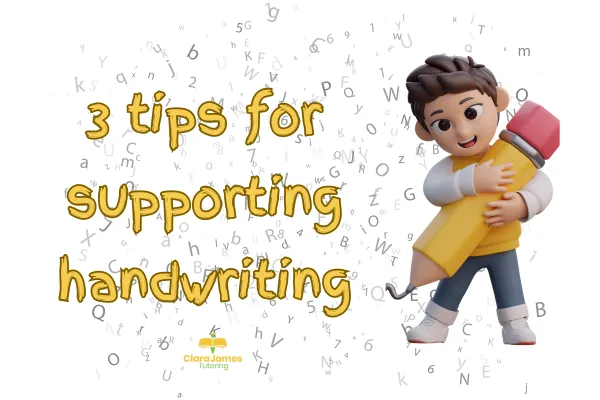
3 tips to help your child with their handwriting
This post is based on a topic that's close to many of our hearts: enhancing handwriting skills.
In this blog, I'll share three engaging activities that not only help improve handwriting but also make the learning process a joyful adventure. From a twist on the classic game of Noughts and Crosses to crafting your very own word searches, and even getting a little messy with playdough, we've got a variety of strategies to explore.
So, grab a cup of tea, and let’s get ready to unlock the world of letters and words in the most enjoyable way possible. Let's help our children embrace the joy of writing with these easy-to-implement, playful techniques that cater to all abilities, including our neurodiverse little learners. Here’s to making learning fun, engaging, and creative.


Noughts and Crosses
We often, in the lessons use the game noughts and crosses to support various aspects of maths or English: answer the question define the word, etc. However, on a easier level there is no reason why you couldn’t pick a letter each and instead of writing a nought or cross to claim your square, write your chosen letter.
A few years back I worked with a dyslexic girl who confused her f’s and w’s so we used to use those instead of a nought or cross.

Make a wordsearch
Another idea I often use is to pick a theme. Anything will do for this as the focus is the handwriting rather than the knowledge (though if you want to combine both you obviously can).
Create a grid on a piece of paper, probably 10x10ish. You may choose to go smaller if you are choosing either a limited number of words or short words.
Then write 6-10 words in the grid for the other person to find (to be kind, write the words underneath as well so the other person knows what they are looking for). The words can go in any direction left right, forwards, backwards, diagonally, but they must go in a straight line. The other squares are then filled in with any random letter.
Once completed swap grids and find the other persons words. The reason this works is because you need to focus on each individual letter as you fill in the grid and the letters need to be fairly well formed for the other person to be able to distinguish what they are so that they can recognise the letter.

If remembering what the letter looks like is part of the problem and you are willing to make a mess,
making the letters out of playdough, clay, etc is great.
Using the different textures and senses opens different neuro pathways making the shapes easier to remember but additionally it also supports the motor skills needed to for forming neat letters (though this isn’t always the cause of the problems especially for neurodiverse children. It’s fun and it could help, so if you’re happy to, please do give it a go.

Our goal at Clara James Tutoring is to make learning fun and accessible to everyone. If children are engaged in what they are doing they are more likely to want to participate, if they are enjoying it, they are more likely to relax and retain the information.
If they are retaining the information it will help boost their knowledge and with knowledge comes confidence.
If you have a child who enjoys learning through games and being more creative, and you enjoy spending time with them, you might be interested in the Clara James Approach, the membership group we have put together to support you in supporting your primary school aged child with their maths and English.
Interested?
Click here to learn more: The Clara James Approach
